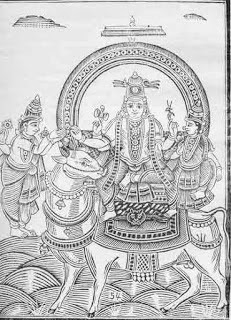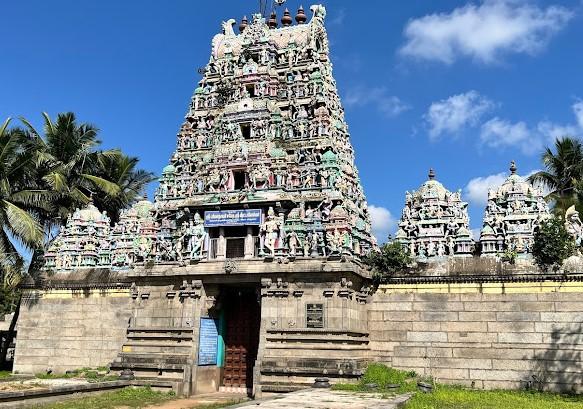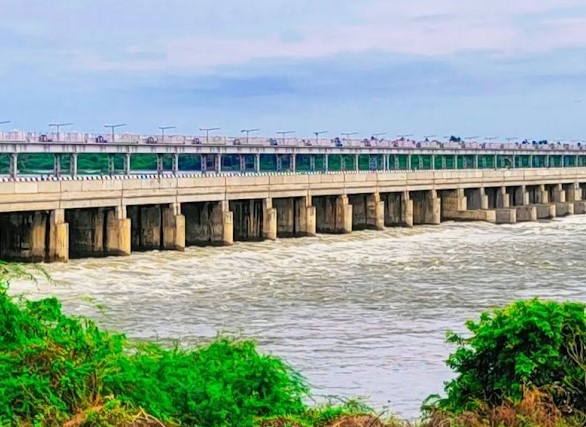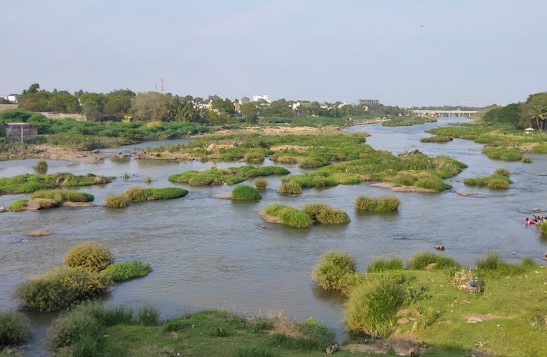- The Veerattaneswarar Temple, located in Thiruvirkudi within the Thiruvarur District of Tamil Nadu, is the 191st Paadal Petra Shiva Sthalam and the 74th on the southern bank of the River Kaveri in Chozha Nadu. This temple is dedicated to Lord Shiva, known here as Veerataneswarar, while his consort is worshipped as Elavarkuzhali or Parimala Nayaki.
- As noted in the Periyapuranam by Sekkizhar, Thirugnanasambandar visited this temple after worshipping at Thirupugalur, where both he and Thirunavukkarasu Swamigal received gold from Lord Shiva, referred to as Varthamaneeswarar in Thirupugalur.
- The temple is significant as one of the eight Ashta Veerattanams, where Shiva is revered as "Samhara Murthi." The Sthala Vriksham (sacred tree) here is Tulsi, and the temple has two Theerthams (sacred water bodies): Chakkara and Changu Theerthams. It is celebrated as one of the 275 Paadal Petra Sthalams, which were glorified in the Thevaram poems by the Tamil Saivite saint Tirugnanasambandar.
PURANIC SIGNIFICANCE 1:


Slaying of Jalandarasuran by Lord Shiva:
- Indira the king of Devas went to Mount Kailash to have Shiva darshan with the pride of a king.
- In the guise of a watchman, Lord Shiva prevented him from proceeding further. Proud Indira struck Shiva with his Vajrayudha when Lord opened his forehead eye. Realising the watchman was Shiva; Indira fell at his feet and sought his pardon.
- Lord Shiva spilled a drop of his sweat in the milk ocean from where a demon child was born.
- The child pulled the beard of Lord Brahma who cried in pain.
- His tears also fell on the child.
- The child wet with Shiva’s sweat, Brahma’s tears and the drop of the milk ocean was named Jalandarasuran.
- When he grew, he demanded Brahma a life without death and the rule of the three worlds. Brahma denied it.
- He got the boon that he would be alive till such time his chaste wife Brindhai was found mentally tainted.
- His atrocities grew in leaps and bounds and finally decided to kill Lord Shiva himself. Lord came before the demon in the guise of an aged person, drew a round line as a chakra.
- He asked the demon to take the Chakra, place it on his head and said that it would destroy him. Arrogant demon challenged that the Chakra could not kill him as his wife was a chaste woman.
- Shiva called Lord Vishnu and asked him to appear before Brinda as Jalandarasuran.
- Not knowing that the visitor was not her husband, she called him in with the respect of a husband and thus got tainted mentally.
- Lord Shiva placed the Chakkara on the demon's head which chopped off his head.
- Knowing the design of Lord Vishnu, Brinda immolated herself cursing Lord Vishnu that he would have to suffer separation from his wife.
- To come over the curse, Lord Vishnu had to take the Ramavathara later, goes the story.
- Due to the curse of Brinda, Lord Vishnu became mentally retarded.
- To cure Him, Lord Shiva sowed a seed at the place where Brinda burnt herself.
- The Tulsi plant grew. A garland was made of the Tulsi leaves and placed on Lord Vishnu.
- He was cured completely. Lord Vishnu asked Lord Shiva to gift him the Chakra-discus.
- He worshipped Lord Shiva with thousand lotus flowers.
- When he found that the number was short by two, he unhesitatingly took his eyes for the puja.
- Pleased Shiva rewarded Lord Vishnu with the Chakra.
Thulasi as Sthala Vriksham here:
Thulasi, which is normally the Sthala Vriksham in Vishnu temples, is the Sthala Vriksham here. Interestingly the Thulasi here is believed to be the reincarnation of Brinda, the wife of the slain demon.
Appar Peruvizha:
Appar is said to have spent his last years here, dedicating his life to the upkeep of this temple, and the Appar Peruvizha which lasts for a period of 10 days, celebrates these events.
PURANIC SIGNIFICANCE 2:
The Tale of Jalandhara
- In the Shiva Purana, a significant event unfolds when Indra and Brihaspati journey toward Mount Kailash to meet Lord Shiva. On their way, they encounter a mendicant who is, unbeknownst to them, Shiva himself. Indra, failing to recognize the deity, inquires about Shiva's whereabouts. The mendicant, remaining silent, provokes Indra’s ire, leading him to wield his powerful weapon, the Vajrayudham, against Shiva.
- In response to this aggression, Shiva opens his third eye in anger, ready to destroy Indra. Recognizing the gravity of the situation, Brihaspati prays to Shiva, pleading for Indra’s forgiveness. To avoid the demonization of Indra, Shiva diverts the destructive fire from his eye toward the ocean. When this fire meets the ocean, it gives rise to a powerful demon, who Brahma names Jalandhara, acknowledging his origin from the depths of the sea. Brahma also informs the celestial deities that since Jalandhara was born from Shiva's third eye, only Shiva can defeat him.
- Under the tutelage of Guru Sukracharya, Jalandhara grows immensely powerful, vanquishing all celestial deities, including Indra. The defeated deities, desperate for relief, implore Shiva to destroy the demon. During this time, Jalandhara marries Tulasi (also known as Vrinda), the daughter of the asura Kalanemi. Her unwavering chastity and devotion further bolster Jalandhara’s strength.
- To confront this formidable demon, Shiva assumes the form of Veerateewarar (or Jalandharavathamurthy). A fierce battle ensues in Virkudi, showcasing the prowess of both Shiva and Jalandhara, with neither side gaining a definitive advantage. Each time Shiva seems to overpower Jalandhara, the demon’s strength is renewed by Tulasi’s devotion.
- Meanwhile, Vishnu, seeking to alter the course of the battle, disguises himself as a sage and deceives Tulasi by conjuring disturbing dreams. Concerned, she approaches the sage for guidance, who creates a mirage that depicts Jalandhara being slain by Shiva, only to be resurrected thereafter. Delighted by this illusion, Tulasi’s chastity falters, weakening Jalandhara.
- Seizing the opportunity, Shiva challenges Jalandhara to break a chariot, a feat the demon cannot accomplish. In this moment of weakness, Shiva defeats Jalandhara using the very chariot he could not break. In the aftermath, Tulasi, feeling betrayed, curses Vishnu, declaring that he would become a stone.
- Pleased by Tulasi’s devotion and recognizing her heart, Vishnu grants her a boon: she will be integral to every worship of Vishnu and hold an equal place in his heart alongside Lakshmi. Ultimately, Jalandhara, born from the essence of Shiva, merges back into Shiva, bringing closure to this epic tale of devotion, strength, and divine interplay.
ADMINISTRATION:
The administration of temples in Tamil Nadu, including the Veerattaneswarar Temple, typically falls under the control of the Hindu Religious and Charitable Endowments (HR&CE) Department of the state government. Specific temples may also have a local temple committee or a managing trustee responsible for day-to-day operations and religious activities.


